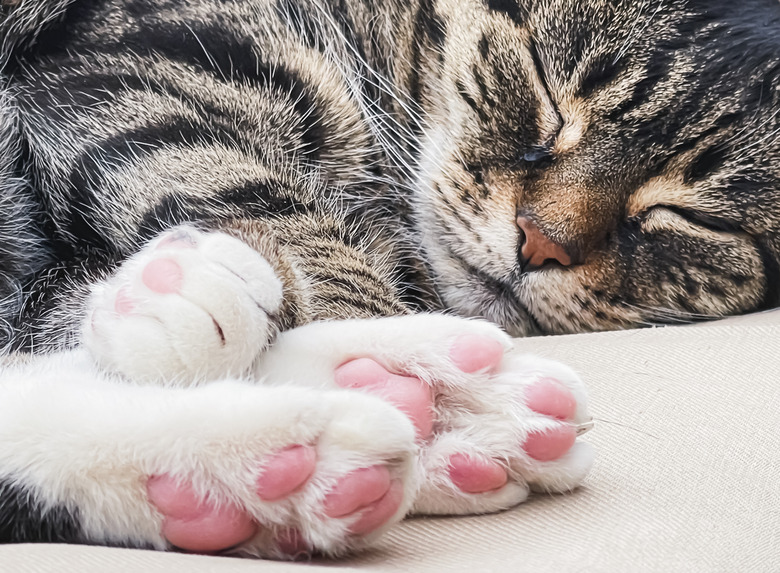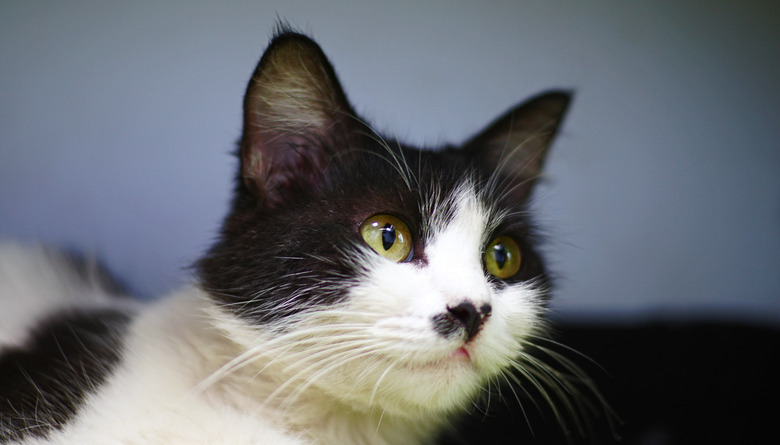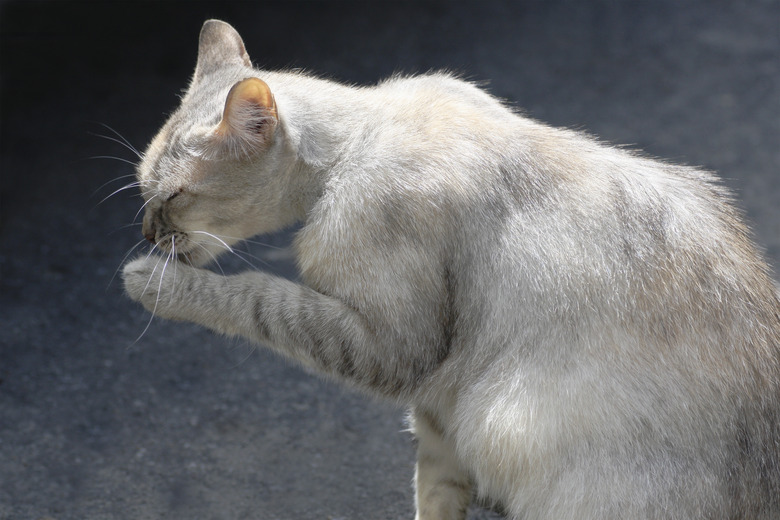Cat Paw Diseases
It's easy to take a cat's cute little paws for granted; however, they're vulnerable to a variety of conditions. Ranging from simple infections to immune-related disorders, potential cat paw diseases include pillow foot, pemphigus, and eosinophilic granuloma.
What is eosinophilic granuloma?
What is eosinophilic granuloma?
An eosinophil is a type of white blood cell that is a part of your cat's immune system. When a cat has a parasitic infection, their eosinophils are one of the body's defense mechanisms to battle the infection. Occasionally, the body mistakes benign material, such as dust, for more serious things, such as fleas. When that happens, your cat can experience an overreaction to the innocent trigger that leads to damage of collagen in the skin.
Known as eosinophilic granuloma complex, the reaction can be present around the mouth or throat, chin or abdomen, hind legs, or footpads. When the cat's footpad is affected, they'll develop lumps on the bottom of their paw that often become ulcerated. The condition is often self-limiting. However, if it doesn't clear up, medication, such as a steroid, may be prescribed, and the veterinarian may recommend other options, such as vigorous flea control, testing for food allergies, and other medications.
Plasma cell pododermatitis and cats
Plasma cell pododermatitis and cats
Pododermatitis is a mouthful, so you can break it down to its roots and call it cat paw, or foot, inflammation, aka pillow foot. Pillow foot occurs when a cat's lymphocytes (another type of white blood cell) produce antibodies in response to inflammation or infection.
A link has been found between plasma cell pododermatitis and feline immunodeficiency virus (FIV), so your veterinarian will test for that as part of evaluating your cat's overall health. About 50% of cats with plasma cell pododermatitis are positive for FIV. If needed, a paw biopsy may also be done. Symptoms of this paw condition include a soft, puffy, swollen paw pad that can have a purple hue, or the pad may have ulcerated lesions. Usually, more than one foot is affected.
The antibiotic doxycycline is often used to treat plasma cell pododermatitis. Steroids, such as prednisone, may be used if doxycycline is ineffective. At present, this poorly understood condition is managed but not cured, usually putting a cat into remission. Occasionally, surgical removal of large masses on the paw pads is required.
Cat paw cancer
Cat paw cancer
Another mouthful, digital squamous cell carcinoma is a skin cancer that can develop on a cat's toes and feet and presents as a growth on your cat's paw. As a carcinoma, this type of cancer is malignant and often returns after removal; however, it's slow-moving and usually found before it has an opportunity to spread.
Symptoms of this rare foot cancer include:
- Sores and/or bleeding ulcerated lesions on the toes
- Limping or reluctance to move
- Nodule or papule on the toe
- Tumors or sores elsewhere on the body
Treating squamous cell carcinoma depends on how many tumors the cat has and where they're located. A single tumor on one toe is usually surgically removed, often through toe amputation. Generally, a cat can expect a full recovery from such surgery, with their movement limited while they recuperate. If there are multiple tumors present, pain medication will provide your cat relief. A veterinary oncologist may be necessary to determine if there are other potential treatments.
Pemphigus foliaceus, erythematosus, and vulgaris in cats
Pemphigus foliaceus, erythematosus, and vulgaris in cats
When an autoimmune disorder results in skin crusting and ulceration, the condition is referred to as pemphigus. The cat's body is essentially reacting to itself, producing antibodies that attack the healthy tissue and cells. Not limited to the paws, pemphigus can affect a cat's gums. There are three types: foliaceus, erythematosus, and vulgaris.
The symptoms of pemphigus include:
- Footpad overgrowth and cracking
- Fluid-filled cysts in the skin
- Lameness
- Swollen lymph nodes and generalized swelling
- Depression
- Fever
- Itchy red skin
- Scales, crusts, and pustules
- Secondary bacterial infections
In severe cases, a cat will need supportive care provided at the veterinarian's office. Steroids and other immunosuppressive medications will be used for an extended period of time to get the disease into remission. At the appropriate time, the medications will be very slowly tapered down to a dose that will maintain the remission. Monthly or quarterly veterinary visits during remission help with monitoring progress.
Cat paw infections
Cat paw infections
When a cat's claw or nail bed develops a fungal or bacterial infection, it's often secondary to a health condition, such as allergies or autoimmune disorders. But some breeds, like Devon Rex and Sphynx, are more prone to nail bed yeast infections.
A cat's foot or paw pad may also become infected, perhaps from stepping on something that caused a cut and a small, foreign object embedded. And since indoor cats use a litter box, they may come into contact with feces, which can make even a simple cut worse. A secondary infection might also occur after a cat fight.
Symptoms of a paw infection include:
- Limping
- Hair loss
- Scabbing
- Puncture wound
- Blood or pus at the wound site
- Fever
- Lethargy
- Loss of appetite
Your veterinarian will determine if there's an underlying cause to be treated, and you may be sent home with the appropriate medication, such as an antibiotic, anti-fungal, or a medicated shampoo.
The bottom line
The bottom line
A cat's paw can develop various types of conditions that may result in swelling, limping, discharge, or bleeding. Sometimes, these can be simple infections, but other times, it may be due to a serious underlying condition, such as an immune-mediated disorder or cancer. Pet owners who notice that their cat's paws are swollen, bleeding, painful, or otherwise abnormal should schedule an appointment with their veterinarian right away to have their cat's health evaluated.



